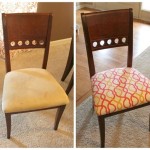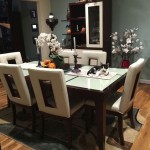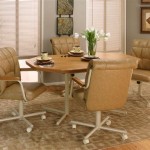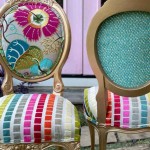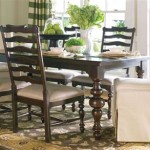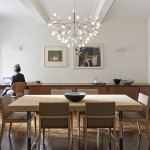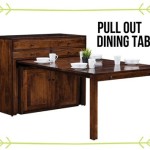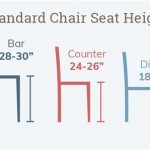Round Dining Room Sets for 8: A Comprehensive Guide
Round dining room sets for eight offer a unique blend of intimacy and inclusivity, providing a convivial atmosphere for family gatherings, dinner parties, or casual meals. These sets, distinguished by their circular table design, encourage conversation and visual connection among all seated individuals. Selecting the right round dining room set for eight involves careful consideration of various factors, including available space, material preferences, style compatibility, and budget constraints. Understanding these elements is crucial for making an informed decision that enhances both the functionality and aesthetic appeal of the dining area.
The appeal of round tables in dining spaces stems from their inherent ability to foster a sense of equality and shared experience. Unlike rectangular tables, which often create a hierarchical seating arrangement with designated "head" positions, round tables eliminate these distinctions, promoting a more egalitarian and welcoming environment. This design encourages interaction and allows for easier communication among all diners, facilitating engaging conversations and stronger social connections. Furthermore, the absence of sharp corners and edges contributes to a softer, more relaxed ambiance.
Beyond the social benefits, round dining room sets for eight offer practical advantages in certain spatial layouts. They can be particularly well-suited for square or smaller dining rooms, where a rectangular table might feel cramped or obstruct traffic flow. The curved perimeter of a round table allows for more efficient use of space, providing ample seating without compromising the overall room dynamics. When considering a round dining room set, the diameter of the table should be carefully measured relative to the dimensions of the room to ensure comfortable movement and adequate clearance around the seating area.
Space Considerations and Measurement
Before embarking on the search for a round dining room set for eight, a thorough assessment of the available space is paramount. Accurate measurements of the dining room’s dimensions are essential to determine the maximum permissible diameter of the table. A common guideline is to leave at least 36 inches of clearance between the table's edge and any walls or furniture in the room. This allows for comfortable passage around the table and prevents the dining area from feeling congested. For optimal comfort, a clearance of 42 inches is preferable, especially in high-traffic areas.
The ideal diameter for a round dining table comfortably seating eight adults typically ranges from 60 to 72 inches. Tables smaller than this may feel cramped, while those significantly larger could overwhelm the space and hinder conversation. It's important to consider the chair size and the leg design of the table. Chairs with armrests will require more space per person than armless chairs. Pedestal-style tables, with a central base rather than individual legs, often provide more legroom and seating flexibility.
In addition to the table's primary dimensions, the location of doorways, windows, and other architectural features within the dining room should be considered. Ensure that the table placement does not obstruct access to these essential elements or impede natural light flow. If the dining room opens into another space, such as a living room or kitchen, the table's position should complement the overall layout of the interconnected areas.
Visualizing the table within the space can be helpful in making an informed decision. Using painter's tape to mark the proposed table diameter on the floor can provide a tangible sense of the scale and impact of the set. This allows for adjustments to be made before committing to a purchase, ensuring that the chosen round dining room set seamlessly integrates into the existing environment.
Material Selection: Durability and Aesthetics
The material composition of a round dining room set significantly influences its durability, aesthetic appeal, and maintenance requirements. A wide range of materials are available, each with distinct characteristics that cater to different preferences and lifestyle considerations. Common choices include solid wood, wood veneers, glass, metal, and various composite materials.
Solid wood is a popular option for its natural beauty, strength, and longevity. Hardwoods such as oak, maple, and cherry are particularly durable and resistant to scratches and dents. Solid wood tables can be stained or painted to match a variety of décor styles, and they often develop a rich patina over time, enhancing their character. However, solid wood can be susceptible to changes in humidity and temperature, potentially leading to warping or cracking if not properly maintained.
Wood veneers offer a more economical alternative to solid wood while still providing a similar aesthetic appeal. Veneers consist of a thin layer of real wood adhered to a core material, such as plywood or particleboard. Veneered tables can be just as visually appealing as solid wood tables, and they are generally more resistant to warping due to the stability of the core material. However, veneers are more prone to damage from scratches and moisture, requiring careful handling and cleaning.
Glass tabletops offer a sleek and modern aesthetic, adding a touch of elegance to any dining room. Tempered glass is a safe and durable option, resistant to scratches and heat. Glass tables are easy to clean and maintain, but they can be prone to fingerprints and smudges. The transparency of glass tabletops can create a sense of spaciousness, making them a good choice for smaller dining rooms.
Metal dining tables, often featuring steel or wrought iron, offer a contemporary and industrial look. Metal is exceptionally durable and resistant to damage, making it a practical choice for families with children or pets. Metal tables can be powder-coated in a variety of colors to match different décor styles. However, metal can feel cold to the touch and may require coasters to protect the surface from scratches.
Composite materials, such as MDF (Medium Density Fiberboard) and particleboard, are cost-effective options that offer a variety of finishes and colors. These materials are generally less durable than solid wood or metal, but they can be a good choice for budget-conscious consumers. Tables made from composite materials often feature laminate or veneer surfaces to enhance their appearance and resistance to wear.
Style Compatibility and Design Considerations
The style of a round dining room set should complement the overall aesthetic of the dining room and the adjacent spaces. Whether the existing décor leans towards traditional, contemporary, rustic, or eclectic, the dining set should contribute to a cohesive and harmonious design scheme. Consistency in color palettes, materials, and design elements is key to creating a visually appealing and inviting dining environment.
Traditional dining rooms often feature round tables made from solid wood with ornate details, such as carved legs and decorative aprons. Dark wood finishes, such as mahogany or cherry, are common choices for traditional sets. Chairs with upholstered seats and backs, often featuring classic fabrics like brocade or velvet, complement the elegant and formal aesthetic of traditional dining rooms.
Contemporary dining rooms typically embrace clean lines, minimalist designs, and neutral color palettes. Round tables with glass or metal tops, or those made from light-colored wood, are well-suited for contemporary spaces. Chairs with sleek, modern designs, often featuring leather or fabric upholstery, complete the contemporary look. Minimalist accessories and artwork are often used to enhance the clean and uncluttered aesthetic.
Rustic dining rooms often feature round tables made from reclaimed wood or natural materials with a distressed finish. Rough-hewn textures, exposed wood grain, and earthy tones contribute to the warm and inviting atmosphere of rustic spaces. Chairs made from wood or metal with simple designs complement the rustic aesthetic. Natural elements, such as plants, stone, and woven textiles, are often incorporated to enhance the rustic charm.
Eclectic dining rooms embrace a mix of styles, colors, and textures, creating a unique and personalized space. Round tables with unconventional designs, such as those featuring a combination of materials or bold colors, can be a focal point in eclectic dining rooms. Chairs with mismatched designs and upholstery patterns add to the eclectic charm. The key to a successful eclectic design is to maintain a sense of balance and cohesion by repeating certain elements or colors throughout the space.
Beyond the overall style, the details of the dining set, such as the leg design, the edge profile of the tabletop, and the shape of the chairs, can significantly impact the overall aesthetic. Consider how these details interact with the existing architectural features and furnishings in the dining room. A well-chosen round dining room set can enhance the visual appeal of the space and create a welcoming and comfortable environment for dining and socializing.

J E Home 59 05 In White Modern Round Sintered Stone Top Dining Table With Carbon Steel Base Seats 8 Pvs Dt010jx02

Furniture Of America Medieve 8 Piece Double Pedestal Round Dining Room Set In Cherry Cm3557ch Rt 8set Greatfurnituredeal

Forclover White Stone 59 In Round Deluxe Wood And Metal Pedestal Base Revolving Dining Table For Room Seats 8 Monmucf 10dt04

Moti Furniture Benedict 9 Piece Traditional Mango Solid Wood Dining Table With Chair White

Round Dining Table Set 1 4 5 7 9 Pcs Marble With Upholstered Chairs Pieces 8

Rustic Round Dining Table Set The Mile

Aico Furniture Villa Valencia 8 Piece Round Dining Room Set 72001 55 8set

Magic Home 59 05 In Rotable Round Lazy Susan Sintered Stone Tabletop Kitchen Dining Table With White Pedestal Metal Base 8 Seats Pv Dt 003aw14 The

Dresden Round Dining Room Set Vintage Bone White

9 Piece Round Dining Table Set 60 Pedestal With 8 Bouclé Upholstered Chairs Ideal For Large Kitchen Or Room Maison Boucle

